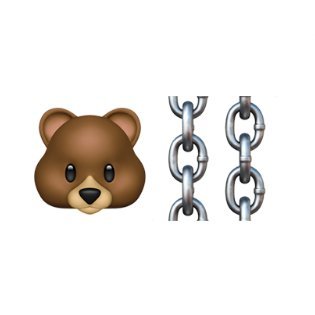Opinion: Feds quantitative easing makes the bear market meaningless
المقال الأصلي بواسطة Anthony Pompliano
الترجمة الأصلية: blockchain العامية
سوق optimism is spreading, and capital flows are changing accordingly. Adam Kobeissi pointed out:
Individual investors confidence in the market is close to historical highs: 46% of American individual investors believe that the probability of a market crash in the next six months is less than 10%. This proportion has reached its highest level since June 2006 and has doubled in the past two years. (Data source: Yale School of Management Survey). In other words, investors concerns about the stock market have fallen to the lowest level in 14 years. At the same time, the SP 500 has rebounded about 50% since its bottom in October 2022. But on the other hand, investors believe that current market valuations are the most overvalued since the bursting of the Internet bubble in April 2000. Market sentiment is already in an extremely excited state.
The craziest part about optimism is that in the long run, optimists are usually right. I think this has become more evident in financial markets because the Fed broke the market mechanism about 16 years ago. Since then, we have never really recovered, and I dont think we will ever fully recover.
I read a book called The Lords of Easy Money over the weekend, written by Christopher Leonard. The book describes in detail the evolution of the Feds policies over the past few decades, especially the rise of quantitative easing (QE) and its profound impact on the market and financial assets.
I got a key conclusion from this book: Economists, investors, and market commentators have made an important mistake over the past fifteen years – they have focused too much on price inflation caused by quantitative easing, but paid too little attention to asset inflation, a phenomenon caused by the same root cause.
1. Two Views on Asset Inflation
Asset inflation can be viewed from two perspectives:
1) The first view is that asset prices cannot continue to rise inتحديnitely. If quantitative easing creates such a trend, then the asset bubble will eventually burst.
2) The second view contradicts the first, arguing that if central banks are always willing to keep interest rates low and print more money when asset prices fall, then asset bubbles will not burst.
I tend to believe the second view. There is a strong argument that as long as the dollar remains in existence as legal tender, the US economy will never again experience a bear market lasting more than 18 months. This may sound bold, but let me explain why.
2. The new normal of current economic policies
Central banks have fully mastered the art of quantitative easing. They can now cut interest rates and print money at an alarming rate. For example, during the 2020 outbreak, the Fed cut interest rates to 0% through an emergency rate cut and created trillions of dollars in a short period of time. Although asset prices collapsed for a time, they quickly rebounded a few months later and hit new highs.
This is the new normal now, asset prices seem to be rising forever, and this is the optimism that permeates the market.
3. New economic reality
For those who grew up in the traditional economy before quantitative easing, this new dynamic may be confusing. But we have nearly two decades of data showing that we have entered an entirely new economic system.
As Christopher Leonard points out in his book, modern money is no longer real physical currency, but rather digital numbers created out of thin air through electronic operations and ultimately distributed to a small number of primary dealers.
This situation has changed everything we traditionally understood about markets, inflation, and investing.
Quantitative easing is actually very simple. At its core, it is about injecting money into the banking system by creating a large amount of new money. The goal of this policy is to stimulate economic growth when banks lack the incentive to save money. The Federal Reserve uses a very powerful tool to achieve this goal, which is to contact a group of major financial dealers in New York. These dealers belong to 24 financial companies called primary dealers who are mainly responsible for buying and selling assets.
These primary dealers have special bank safes at the Fed, called reserve accounts. When the Fed wants to implement quantitative easing, traders at the New York Fed contact these primary dealers, such as JPMorgan Chase, and offer to buy $8 billion worth of Treasury bonds from them. JPMorgan Chase will sell these Treasury bonds to the Fed traders. Then, with just a few clicks, the Fed traders can notify JPMorgan Chase bankers to check their reserve accounts.
In this way, the Fed instantly created $8 billion in its reserve account to complete this purchase. After JPMorgan Chase received this money, it could use it to buy other assets in the market. This practice is the key way the Fed creates money: it creates money in the reserve accounts of primary dealers by purchasing assets from them.
Simply put, this is how the Federal Reserve uses the method of creating money to influence the market and stabilize the economy.
If you give someone a printing press, they will start printing money.
And when the Fed starts printing money, asset prices continue to rise. This may cause some people to ask: What if the Fed stops printing money? The analysis angle will change accordingly, but the key to the story is: the United States can no longer afford to stop printing money. We have become dependent on cheap and abundant money.
This is why I think it is almost impossible for a bear market to last more than 18 months. If the Fed sees a sharp decline in asset prices, they will intervene quickly and strongly.
The market is not completely controlled by the Fed, but the Fed acts based on market changes.
In the book The Lords of Easy Money, author Christopher Leonard mentioned a perfect example to illustrate this point: the Federal Reserve led by Ben Bernanke had planned to conduct quantitative easing (QE) on a smaller scale and at a slower pace, but because of concerns that the divergence between market expectations and actual actions would lead to a decline in asset prices, Bernanke eventually had to meet market expectations.
So why do I mention this? Because the market optimism I mentioned at the beginning of today is very important, and the reason is that the Fed is almost required by the market to intervene in the market and push asset prices higher. Market participants expect this, so the Fed has to act.
Now, the market is the real driver.
This development means that as an investor you have a choice. You can choose to believe that the market has gone crazy and a multi-year bear market is coming; or you can recognize that the Fed has destabilized the financial markets and will intervene by stimulating the economy at any time of market trouble until they create high inflation in the US dollar through excessive money printing (a process that will take much longer than most people think!).
I am an optimist and an observer of history. Just look back at what happened during the global financial crisis (2008) to see that the rules of the game have changed. The key to investing is not timing the market, but how long you hold your assets for the long term.
Bears sound smart, but bulls are the real winners.
This article is sourced from the internet: Opinion: Feds quantitative easing makes the bear market meaningless
Related: Econia Labs launches emojicoin.fun, an emoji token issuance platform
Econia Labs has announced a preview of its latest platform, emojicoin.fun, which is now in closed beta. emojicoin.fun introduces a new form of representation for digital assets through the use of emoji-style token symbols (i.e. emojicoins), while providing a decentralized trading experience for all users. emojicoin.fun has several unique features including a fair launch of emojicoins, an open source trading platform, and an on-chain chat function for real-time community interaction. Through emojicoins, users can use emoji symbols as token symbols to generate tokens independently, which breaks away from the convention of traditional letters or numbers and adds more creativity to the world of decentralized finance. Kiki, co-founder, COO and CCO of Econia Labs, shared some insights on the utility and experience of emojicoin.fun. emojicoin.fun is simple to use, without the…










